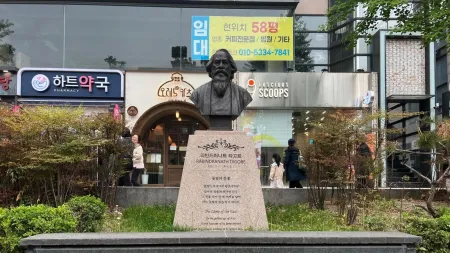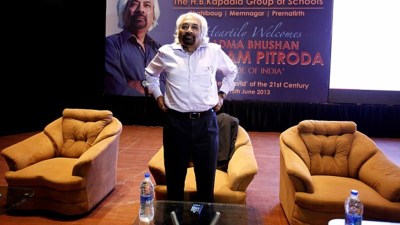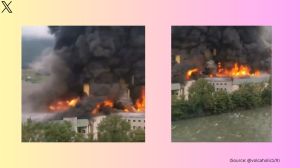- India
- International
Hamas, Fatah, Islamic Jihad, PLO, and Palestinian Authority: A brief introduction to the political players in Palestine
There are several political players involved in Palestine. Here is a primer on all the entities you need to know about.
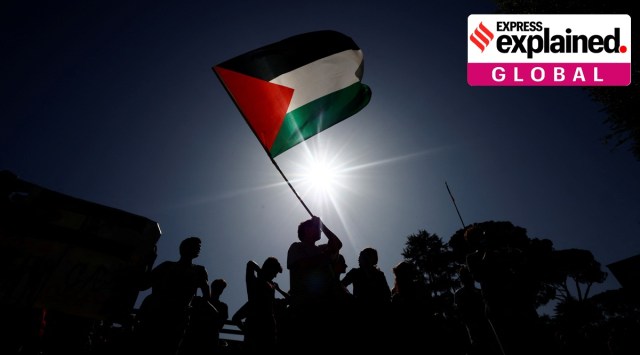 A person holds a Palestinian flag as students demonstrate to express support for the people of Palestine during a protest at La Sapienza University, in Rome, October 10, 2023. REUTERS/Yara Nardi
A person holds a Palestinian flag as students demonstrate to express support for the people of Palestine during a protest at La Sapienza University, in Rome, October 10, 2023. REUTERS/Yara Nardi Last week’s attack on Israel has brought not just Hamas under the spotlight, but also other significant players in Palestine such as Fatah, Palestinian Islamic Jihad (PIJ), Palestine Liberation Organisation (PLO), and Palestinian Authority (PA). Here is a quick look at each of them — their history, objectives, and role in the Israel-Palestine conflict.
Fatah
Fatah — the word means to conquer — was formed in Kuwait in the late 1950s after the displacement and dispossession of more than 70,000 Palestinian Arabs during the 1948 Israeli-Arab War. The secular nationalist organisation was established by numerous people, but the key founders were Yasser Arafat (he went on to become the president of the Palestinian Authority) and his fellow activists, including Mahmoud Abbas (the current president of the Palestinian Authority).
Fatah’s objective was quite clear from the beginning: an armed struggle against Israel to liberate Palestine. Its military operations began in 1965 and most of them were carried out from Jordan and Lebanon. Three years later, the organisation became part of the Palestine Liberation Organisation (PLO) — an umbrella political organisation of numerous Arab groups that aimed to help Palestine attain statehood through armed resistance (more on PLO later).
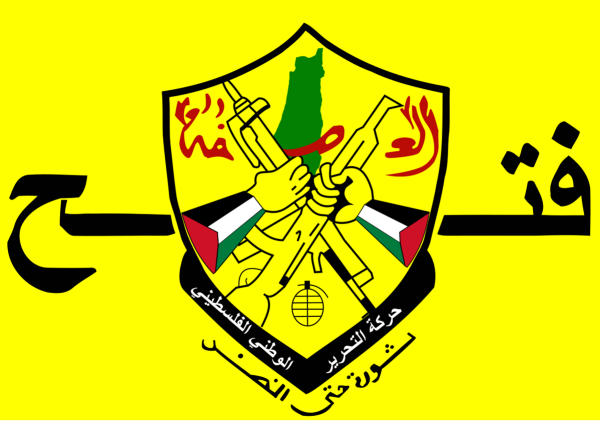 Fatah flag. (Credit: Wikimedia Commons)
Fatah flag. (Credit: Wikimedia Commons)
The armed struggle of Fatah soon came to an end after both Jordan and Lebanon pushed out its military wing from their territories in the 1970s. The organisation went through a transformation, according to a report by Al Jazeera, and began to negotiate with Israel. In the 1990s, Fatah-led PLO officially announced they would renounce their armed resistance and later signed the Oslo Accords that established the Palestinian National Authority (PNA), or Palestinian Authority (PA), an interim self-governing body meant to lead to an independent Palestinian State (scroll down to read more about PA).
Currently, Fatah heads the PA, which governs about 40% of the occupied West Bank. In 2006, it lost control of the Gaza Strip after losing to the political wing of the Palestinian militant group Hamas in the democratic elections for the Palestinian Legislative Council (PLC).

 Yasser Arafat addresses a session at the Annual Meeting 2001 of the World Economic Forum in Davos, January 28, 2001. (Credit: Wikimedia Commons)
Yasser Arafat addresses a session at the Annual Meeting 2001 of the World Economic Forum in Davos, January 28, 2001. (Credit: Wikimedia Commons)
Hamas
Hamas is another major political party in Palestine but it’s best known for its ongoing armed struggle against Israel. The group was founded in the late 1980s, after the beginning of the first Palestinian intifada, or uprising, against Israel’s occupation of the West Bank and Gaza Strip — the Jewish state had captured the two Palestinian territories after winning the 1967 Israeli-Arab War.
Like Fatah, Hamas also aims to create a Palestinian state on the borders of 1967 (the group updated its goal after the release of a new 2017 political document). However, unlike Fatah, Hamas hasn’t recognised the statehood of Israel.
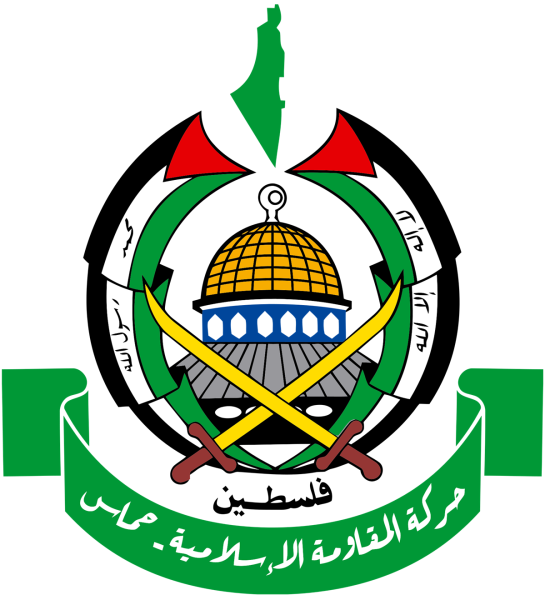 Hamas logo. (Credit: Wikimedia Commons)
Hamas logo. (Credit: Wikimedia Commons)
As mentioned before, the militant organisation has been ruling the Gaza Strip, which consists of more than two million people, since 2006.
For a detailed explainer of Hamas, their history and operations, click here.
Palestine Islamic Jihad (PIJ)
The PIJ is the second largest militant group in Palestine that aims to destroy Israel and establish a fully Islamic Palestinian state in its place by using force and military means. It was established in 1981 by members of Egypt’s Muslim Brotherhood. International media reports suggest that the group is financially supported by Iran (the Shiite nation is suspected of funding Hamas also) and has long-standing ties with that country — PIJ is said to have taken inspiration from the 1979 Islamic Revolution.
 Palestine Islamic Jihad flag. (Credit: Wikimedia Commons)
Palestine Islamic Jihad flag. (Credit: Wikimedia Commons)
While Hamas and PIJ are allies, both groups have separate identities and some differences.
“PIJ is a smaller, more elite, often secretive militia devoted to armed struggle, while Hamas is a far larger, community-based organisation that takes on full governmental responsibilities in Gaza,” newspaper Haaretz reported.
Although PIJ has remained away from politics, it has long participated in student politics, fielding candidates in Palestinian university elections since the 1980s. It also took part in the 1996 legislative elections.
Palestine Liberation Organisation (PLO)
PLO was conceived in 1964 at an Arab League summit in Cairo, Egypt, with the sole aim of liberating Palestine with the help of an armed struggle to achieve its goals. The organisation is essentially a coalition of smaller Arab groups (except Hamas and Islamic Jihad), but Fatah remains the dominant one — Fatah’s founder Yasser Arafat became PLO’s chairman in 1969 and remained in office till his death in 2004. He was succeeded by Arafat’s aid Mahmoud Abbas, who still is the head of the organisation.
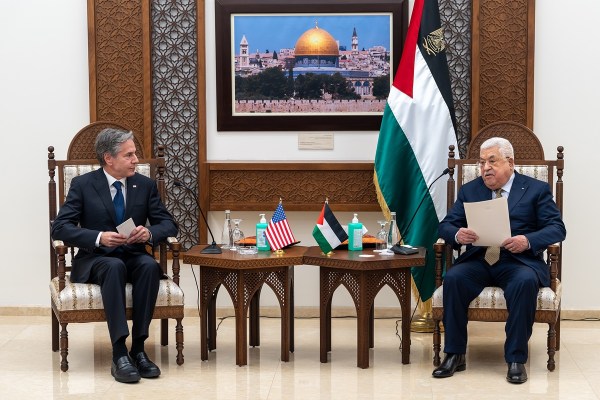 US Secretary of State Antony J Blinken (left) meets with Palestinian Authority President Mahmoud Abbas (right) in Ramallah on January 31, 2023. (Photo: Wikimedia Commons)
US Secretary of State Antony J Blinken (left) meets with Palestinian Authority President Mahmoud Abbas (right) in Ramallah on January 31, 2023. (Photo: Wikimedia Commons)
While PLO continued its armed struggle into the 1990s, it was officially recognised by the Arab League and the United Nations General Assembly as the “sole legitimate representative of the Palestinian people”, and was invited to participate in all UN activities under observer status. In 1988, it endorsed a two-state solution to the conflict with Israel, according to the European Council on Foreign Relations, a think tank based in Berlin, Germany.
A big turning point for PLO came in the early 1990s, when it not only gave up its armed struggle against Israel but also recognised the statehood of the Jewish state. This was a huge setback for the Palestinian nationalist movement and gave rise to Hamas, said Khaled Al Hroub, professor of Middle Eastern Studies at the Northwestern University of Qatar, in an interview with Al Jazeera.
Palestinian Authority (PA)
The PA was founded in July 1994 by the Oslo Accords as an interim body to govern parts of Gaza and the West Bank (except East Jerusalem) till an agreed solution to the Israel-Palestine conflict.
The PA “functions as an agency of the PLO, which represents Palestinians at international bodies. It is led by a directly-elected president, who appoints a prime minister and government which must have the support of the elected Legislative Council,” according to a report by the BBC.
In 2006, the governing body was ousted from the Gaza Strip after Hamas won the PLC elections and since then the militant group has continued to control the territory.
Currently, the PA controls parts of the West Bank and is headed by Mahmoud Abbas, who is also the chief of PLO and Fatah.
More Explained
EXPRESS OPINION
May 08: Latest News
- 01
- 02
- 03
- 04
- 05




